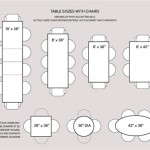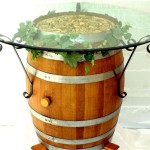Essential Aspects of Small Vegetable Garden Layout
Cultivating a lush vegetable garden, even in a limited space, is an enriching and rewarding endeavor. Planning an efficient layout is crucial for maximizing yield and minimizing effort. Here are some essential aspects to consider when designing your small vegetable garden:
1. Sunlight and Schatten
Most vegetables thrive in full sun (6-8 hours of direct sunlight daily). Analyze your garden's sun exposure throughout the day and group plants with similar sunlight requirements together. Taller crops, such as tomatoes and corn, should be positioned at the north end to avoid shading shorter plants.
2. Plan for Succession Planting
Succession planting involves sowing new crops as others mature. This technique maximizes space and extends the harvest season. For example, after harvesting early spring crops like lettuce and radishes, plant warm-season vegetables like tomatoes and peppers.
3. Companion Planting
Companion planting is a traditional gardening practice that involves grouping plants that benefit from each other's presence. Marigolds, for instance, repel pests, while basil can inhibit the growth of weeds. Consider the compatibility of different species when planning your layout.
4. Vertical Gardening
When space is limited, vertical gardening techniques can be employed. Trellises and hanging baskets allow plants to grow upwards, providing a space-saving solution. Trellises support tall plants like beans and cucumbers, while hanging baskets can accommodate herbs, strawberries, and trailing varieties.
5. Raised Beds
Raised beds are elevated planting areas that offer several advantages. They improve drainage, extend the growing season, and provide better control over soil conditions. Construct raised beds using wood, concrete blocks, or recycled materials to suit your space and needs.
6. Companion Planting
Companion planting is a great way to maximize space and improve productivity in your small vegetable garden. Certain plant species benefit from being planted near each other, while others can inhibit growth or attract pests. Here are some examples of companion planting that can improve your harvest:
- Tomatoes and basil: Basil helps to repel insects that can damage tomato plants.
- Carrots and onions: Onions help to repel carrot flies, and carrots help to break up the soil for onions.
- Lettuce and radishes: Radishes help to break up the soil for lettuce, and lettuce provides shade for radishes.
- Beans and corn: Beans fix nitrogen in the soil, which benefits corn. Corn provides support for beans to climb.
- Marigolds and tomatoes: Marigolds help to repel nematodes that can damage tomato roots.
7. Crop Rotation
Crop rotation is another important consideration for small vegetable gardens. Planting the same crops in the same location year after year can deplete the soil of essential nutrients and increase the risk of disease. By rotating crops, you can help to maintain soil fertility and reduce the incidence of pests and diseases.
Here are some tips for crop rotation in small vegetable gardens:
- Divide your garden into three or four sections.
- Plant a different family of vegetables in each section each year.
- For example, you could plant tomatoes, peppers, and eggplant in one section, beans, peas, and cucumbers in another section, and corn, squash, and zucchini in a third section.
- Rotate the crops each year so that each section grows a different family of vegetables.

Small Vegetable Garden Ideas Gate

19 Vegetable Garden Plans Layout Ideas That Will Inspire You Planning Small Gardens Summer Vegetables

Small Vegetable Garden Ideas Gate

19 Vegetable Garden Plans Layout Ideas That Will Inspire You Small Gardens Planning

Plans For Small Space Vegetable Gardens Gardener S Supply

25 Best Vegetable Garden Layout Ideas For Your Yard

The Top 4 Vegetable Garden Layout Ideas Westwood Gardens

Small Vegetable Garden Ideas 15 Ways To Maximize Your Space

Vegetable Garden Layout Planning Bonnie Plants

Vegetable Garden Planner Layout Design Plans For Small Home Gardens








